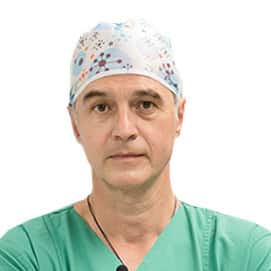In the early stages of the disease, treatment can be outpatient and minimally invasive. Running hemorrhoids can only be cured by surgery with hospitalization. This can be avoided with early treatment of hemorrhoids. However, in many cases, patients seek medical help only when the pain and other troubles outweigh the feeling of shame.
Before starting treatment, it is necessary to conduct a thorough examination of the rectum or even the entire colon to rule out cancer. There are four stages of hemorrhoids. In the first and second stages, successful and painless treatment can be carried out on an outpatient basis by sclerotherapy or ligation of hemorrhoids with a rubber ligature. With progression to the third and fourth stages, when the hemorrhoids are already "falling out" to the outside, they talk about their prolapse, and the treatment, as a rule, should be surgical. Standard methods of surgery involve the removal of swollen tissues. When using a new, painless method of surgery - the so-called method with the use of a stapler - the tissue is removed above the zone of pain sensitivity, and the prolapse due to shortening of the tissues disappears.
Medical treatment
Light local anesthesia is used to treat symptoms, as well as hemostatic and anti-inflammatory substances in the form of suppositories or ointments.
For hemorrhoids of the first and second degree, the following methods of treatment can be used. All of these methods have a high recurrence rate.
Sclerosis
During sclerosis, small hemorrhoids are first fixed with a proctoscope, and then an inflammatory-inducing substance (for example, polidocanol) is injected into them. Due to the resulting vascular thrombosis and the resulting sclerosis, the hemorrhoids shrink.
infrared irradiation
Sclerosis of blood vessels is also provided with infrared irradiation due to local heating of tissues.
Cryohemorrhoidectomy
When freezing, for example, with liquid nitrogen, tissue dies. Since the area of freezing is difficult to pinpoint, this method is used only in rare cases.
Rubber ligature
The imposition of a rubber ligature causes the death of tissues due to the ligation of the nodes and the resulting complete thrombosis of the vessels.
To date, there are many methods of hemorrhoidectomy, which received their name from the names of their founders. With classical methods of surgery, the percentage of relapses is usually very small.
According to Milligan-Morgan (open hemorrhoidectomy)
When using this method, hemorrhoids are first removed with a forceps through the anus to the outside. After separation of the hemorrhoidal tissues from the sphincter, the nodes are excised with a scalpel. The postoperative wound is not sutured after this (which is why the operation was called open hemorrhoidectomy).
According to Ferguson (closed hemorrhoidectomy)
This method is considered an extension of the Milligan-Morgan method. However, unlike it, the wound after excision of the nodes is closed with a continuous longitudinal suture up to the anoderm.
According to Parks (submucosal hemorrhoidectomy)
First, a Y-shaped incision is made in the area of the nodes, exposing the underlying hemorrhoidal plexus, and the blood vessels are crossed. After removal of the swollen tissues, the edges of the wound are sutured with a T-shaped suture.
According to Fansler-Arnold (reconstructive hemorrhoidectomy)
When using this method, the outwardly displaced skin in the anus is exfoliated from the inside, after which the underlying hemorrhoids are excised. Then the skin flap is applied again and sutured to the inside of the anus.
According to Whitehead (supraanodermal hemorrhoidectomy)
When using the Whitehead method, the hemorrhoidal plexuses are resected circularly. In this case, in the area of the anus, complete destruction of the skin of the anoderm occurs.
The so-called new surgical techniques are generally less invasive than the classic hemorrhoidectomy techniques.
Hemorrhoidectomy according to Longo using a stapler
To prepare for this surgical intervention, the anal canal is first widened, and a circular suture is placed in the rectal area - above the dentate line. Then, with the help of a special stapler (in English "Stapler"), the excess tissue is excised. At the same time, the device leaves a double row of connecting titanium brackets, which fix the hemorrhoidal plexus located below. After that, the wound is closed with a suture.
Ligation of hemorrhoidal arteries (HA) under the control of ultrasonic Doppler
When using this method, hemorrhoidal nodes are dezarterized above the dentate line. At the first stage, with the help of ultrasound, the exact localization of the arteries is established using a special proctoscope. Then the artery is ligated, which is stitched with a needle and ligated with a wire loop. This surgery is usually performed on an outpatient basis.
Transanal hemorrhoidal desarterization (THD)
This method is an improvement of the LGA technique. The improvement lies in the fact that, in addition to desarterization, plication of “drop-down” tissues of the mucous membrane and hemorrhoids is carried out.
Minimally invasive, subanodermal submucosal hemorrhoid repair (MISSH)
When using this method, in addition to desarterization, the node is mobilized, and tissue plication is performed by means of anal lifting in the low-pain area above the dentate line.
Head of the Clinic for General, Visceral and Minimally Invasive Surgery
Head of the Clinic for General, Visceral, Thoracic and Endocrine Surgery
Video
Request appointment
Useful links
Photo gallery










